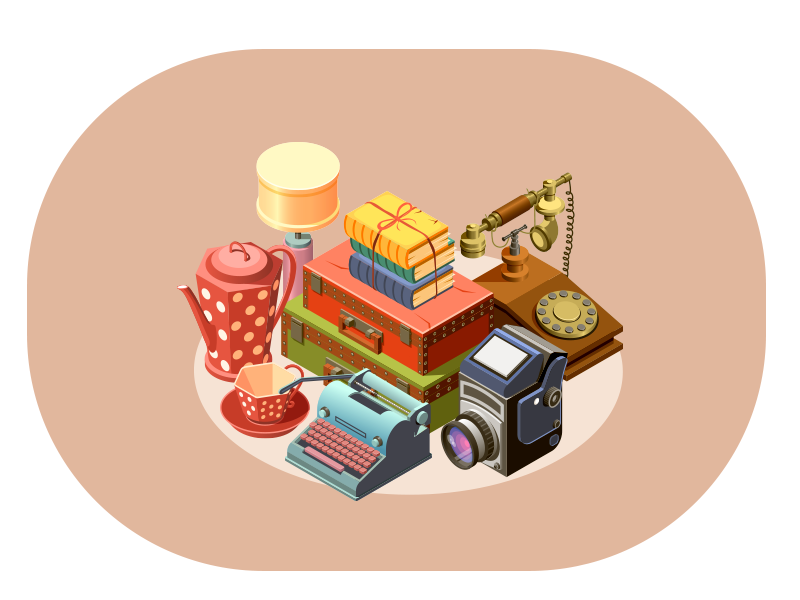Preventing Mold to Protect Your Health: The Facts
The 411 On Mold: What It Is, Why It’s So Dangerous, and How To Eliminate It
Is every little spot or discoloration you see in your home a nasty case of mold? It might or might not be. The only way to know for sure is to learn the definition of “mold.”

It’s also helpful to acquire an understanding of what mold looks and smells like, why it can be so dangerous to your health, and why it is especially troublesome for children and pets. Startling data as reported by Earth Web shows that around 70% of homes, including new buildings, have some level of mold present (Source: https://earthweb.com/mold-statistics). Finally, every homeowner or apartment-dweller needs to know how to prevent mold and get rid of it once it appears. Here are the basics about one of life’s most detested living substances: mold.
Mold Basics Everyone Should Know
What should you know before buying a mold testing kit or hiring a professional? Here are some essential factoids about mold based on Centers for Disease Control and Prevention noteworthy information (Source: https://www.cdc.gov/mold/faqs.htm):
- Mold is all over the place, microscopically anyway. It helps all organic matter break down and plays a vital role in life’s chemical processes. But when it starts to grow uncontrolled in your living space, you can get very sick from it.
- It can appear and flourish on just about any surface but is most at home around moisture.
- Mold only needs three things to grow: warmer-than-average temperatures, moisture, and a source of food (pretty much any organic substance will do).
- There are well more than 100,000 variations of mold.
- Most homeowners insurance policies do not cover the cost of removing mold because, unless it came about from an accident like a flood or fire, mold is usually viewed as a result of poor maintenance by owners.
- Paint has no effect on mold, so don’t attempt to cover a moldy surface with a fresh coat of paint. Eventually, mold will break through the surface of the paint and continue growing unabated.

How Mold Affects Your Health
Not everyone reacts physically to mold, but the majority of people will still display common symptoms if they are exposed to the stuff repeatedly or in large doses. Be on guard if you notice that your symptoms magically disappear whenever you leave your home.
That’s a reliable sign that the source of your symptoms are located inside your living space and are not hay fever-type problems. According to Mold Help’s extensive coverage on the topic the most typical symptoms are flu-like, and include one or more of the following:
- Coughs, from mild to severe
- Various kinds of skin rashes
- Sore, scratchy throat
- Mild to severe headaches
- Irritation of the lungs
- Bouts of sneezing
- General congestion
- Watery eyes
- A runny or stuffy nose
Protecting Children and Pets
Mold prevention professional Michael Pinto’s research led to a discovery that children exposed to mold in have nearly a 3X greater risk of becoming asthmatic in relation to children who did not have extensive mold exposure in their first year of life (Source: https://realtimelab.com/mold-statistics). Children often display the same kinds of symptoms as adults who are exposed to mold. However, very young kids can become quite ill if their immune systems are not mature enough to handle the effects of mold. Likewise, the effect of mold on dog or cat health is reasonably obvious, but the symptoms are sometimes different.
For example, dogs or cats can become very tired and listless when exposed to mold. Pets also sometimes experience bloody noses, great difficulty breathing, and internal hemorrhages. Kids who have asthma or allergies can be hit hard by the effects of mold and might experience an asthma attack or begin wheezing uncontrollably.

The effects of mold on dog and cat health is a fact of life for animals who live in mold-infested environments. Parents should also keep an eye on children who begin displaying respiratory illness symptoms that don’t appear related to asthma or a known condition they already have.
Preventing and Getting Rid of Mold
Homeowners can do a lot to prevent mold. The primary tactic is keeping unwanted moisture away from surfaces like walls, floors, and ceilings. Keep moist areas like bathrooms clean. As reported by Medical News Today, mold growth and associated problems with it can be prevented by keeping humidity levels below 50% (Source: https://www.medicalnewstoday.com/articles/325474). Be on the lookout for visible mold and make a note of musty smells anywhere in your living space.
Professionals can do a lot to test for mold, get rid of it, and help you employ a prevention system for keeping it at bay. Because mold can spread easily when it’s disturbed, consider letting experts remove it. Costs are reasonable, and pros know how to detect, eliminate, and prevent the unwanted substance in any area.
Debunking Old Mold Myths
Mold has been around for millions of years, so naturally, there are plenty of myths about common topics like mold removal, types of mold, mold tests, mold remediation, and everything else. You can usually spot a mold myth a mile away because most of the misinformation includes words like “every” and “all.”

Some of the first myths on our list below are perfect examples of how blanket statements about mold are usually incorrect. Here are the most common mold myths you’ll hear.
- Myth: Clean homes contain absolutely zero mold.
- Fact: All human environments contain some types of mold, but not all of it is toxic mold. With very few exceptions, no human living space is completely free of mold spores. The problems arise when concentrations of spores become significant.
Tiny amounts of black mold or white mold, for example, don’t pose a problem. Remember that if there’s enough mold on walls or other places in your home, to the point that you can see it, then you need to get a mold testing kit or hire a mold removal pro as quickly as possible. - Myth:All mold is evil and must be eradicated immediately.
- Fact: Some types of mold serve very important scientific purposes, like the mold that helps cheese grow or the kind that medical researchers use to develop antibiotics like penicillin.
- Myth: Everyone reacts the same way to mold.
- Fact: Some people have little or no reaction to mold exposure, but most can become ill after enough exposure to black mold, white mold, or other varieties of the substance. Mold tests are an excellent way to find out how much and what kind of mold is present in your home or office.
- Myth: Mold never returns after you have it removed.
- Fact: No matter what type of mold removal you use, the substance can return unless you remove the root cause, which is usually moisture. Homes that suffer from water leaks, are in high-humidity climates, or regularly are inundated with rainfall are prime candidates for return mold outbreaks.
- Myth: You can take care of mold problems yourself.
- Fact: This myth is common. Even though very small, temporary mold situations can be handled by simple cleanup, it takes a professional to take care of mold remediation, which is often preceded by a complete mold inspection.
The standard rule is that if you have more than 10 s.f. of mold, you need expert help. However, even areas smaller than 10 s.f. can need a professional, especially if the source of the problem is moisture in walls or floors.
For problems with toxic mold, concrete mold, brick mold, or virtually any mold on walls, it’s best to avoid the do-it-yourself approach. - Myth: Bleach is the best weapon against mold.
- Fact: Bleach is not effective against mold. It temporarily cleans the area but does not kill mold spores. A better remedy against bathroom or kitchen mold problems is to use a mixture of warm water and laundry detergent.
- Myth: Dangerous molds are visible to the human eye.
- Fact: Many types are not visible. Common versions like brick mold, black mold, and concrete mold are usually easy to spot. However, some molds are relatively invisible and can only be detected by a professional mold inspection.
- Myth: Small volumes or tiny spots of mold are not dangerous and can be ignored.
- Fact: This might be the most dangerous myth of all because it leads people into a false sense of security. Even a very small amount of mold can pose a problem. This is primarily the case when the spot you see is a portion of a larger, non-visible mold problem behind a nearby wall, under a floorboard, or in a ceiling.
The Final Takeaway: Knowledge is Power in the Battle Against Mold

When you know that mold carries a musty smell, that it can appear in a wide variety of colors, and typically shows up in or near a moist environment, you can spot a problem before it gets out of hand.
The more you know about what mold looks and smells like, the more prepared you’ll be to deal with the problem yourself or call in professionals to remove it.
Part of being knowledgeable is also knowing how to hire the right mold-removal experts. Look for companies that have years of experience in mold removal and remediation. That means the team should do much more than just get rid of the visible mold in your home.
They should also know how to inspect for hidden sources of the substance, how to eliminate unwanted sources of moisture, and how to help you prevent a future occurrence of mold in or around your home.
Mold is nasty stuff. It smells, looks terrible, can eat away at your valuable property, can destroy the resale value of a home, and, worst of all, perhaps, can make people and pets very ill. If you suspect your home contains mold, don’t waste time. Contact a professional mold-removal expert asap and deal with the problem the smart way.

About Jennifer Hanzlick
Clutter Trucker is a Denver-based hoarding clean-out company founded by Jennifer Hanzlick. Jennifer leveraged 15 years of corporate experience in to start the company in 2008. Her mission is to help and educate individuals and their loved ones who have hoarding disorder. A featured speaker at Ted X Boulder, Jennifer works directly with community and non-profit organizations to boost public awareness about the condition. To that end, she founded the Colorado Hoarding Task Force in 2015.
 720-982-7856
720-982-7856



